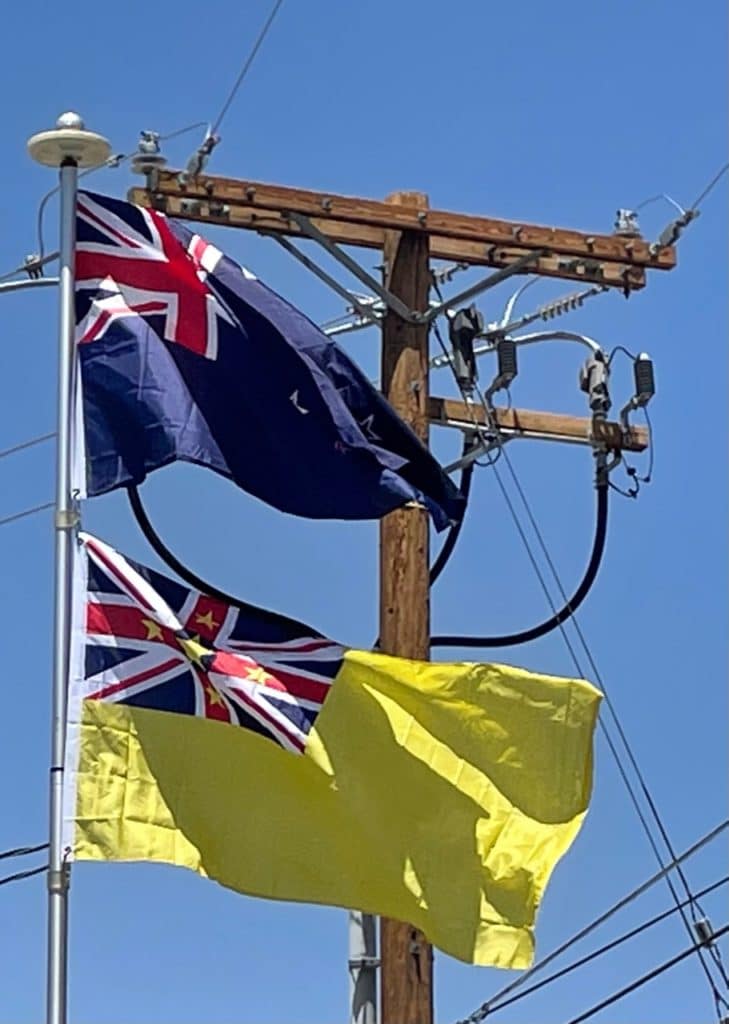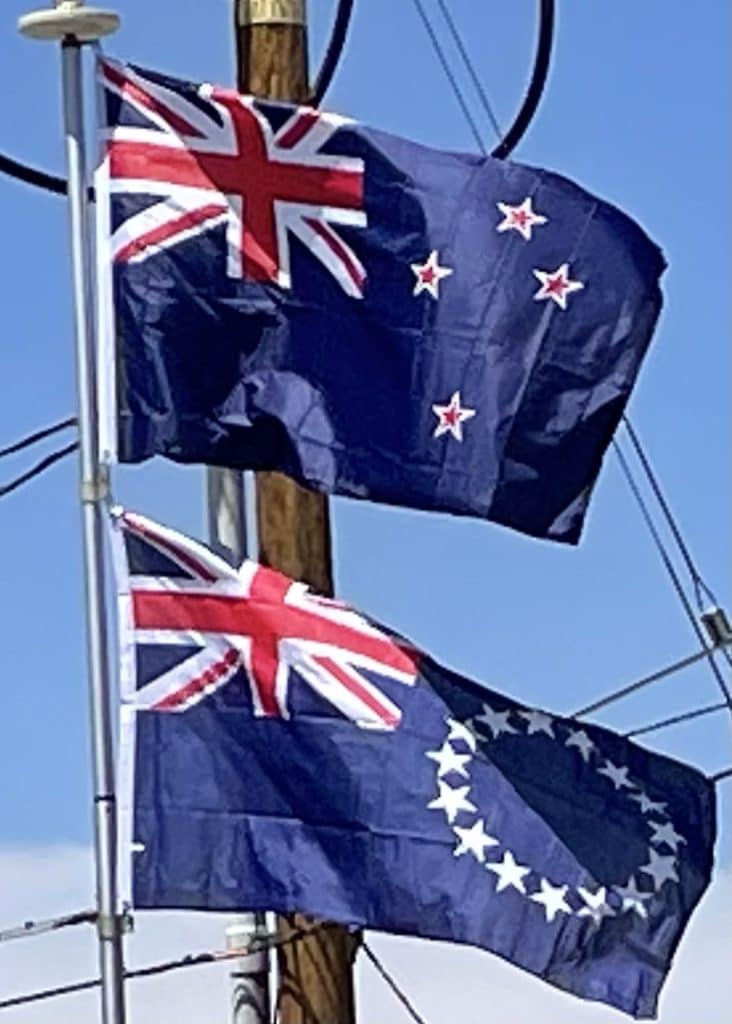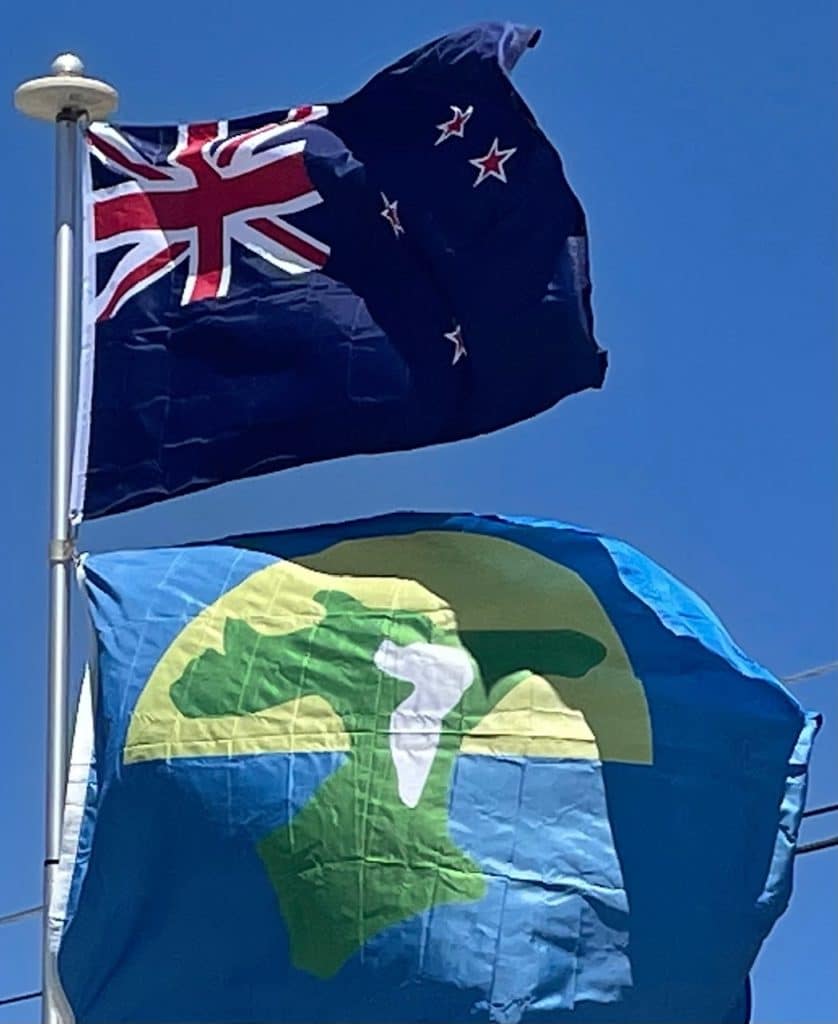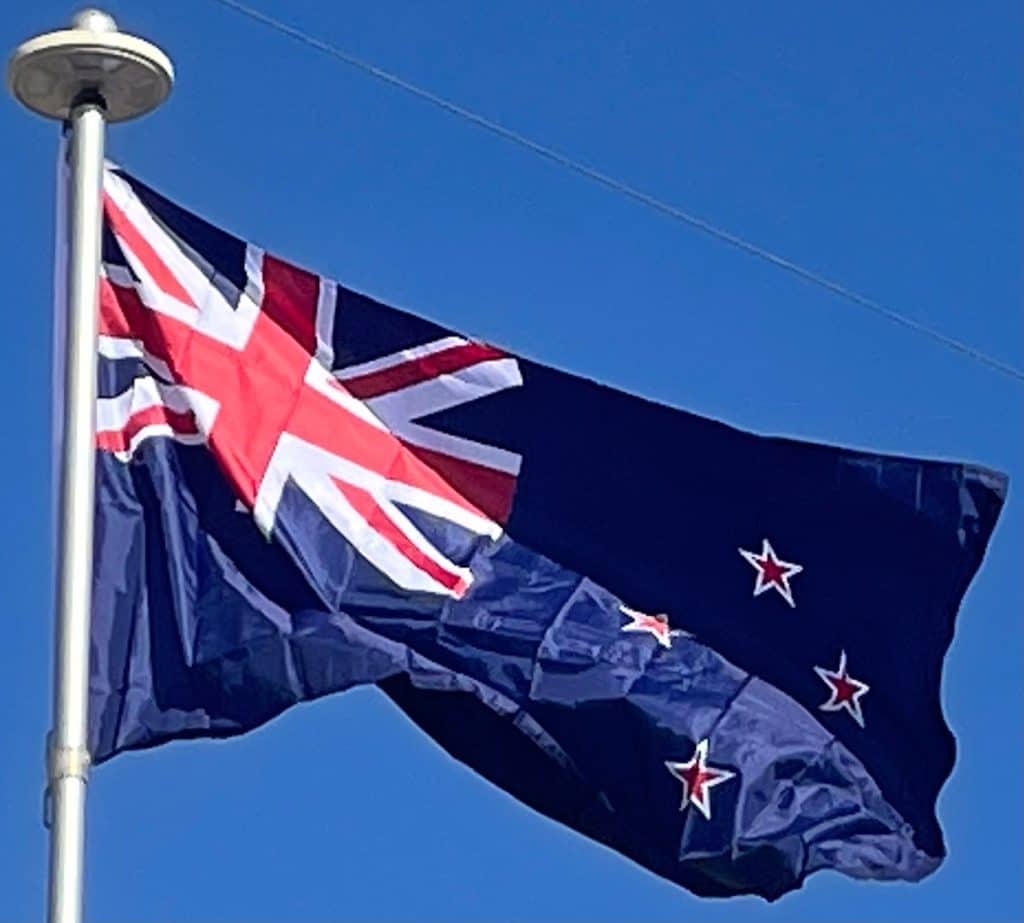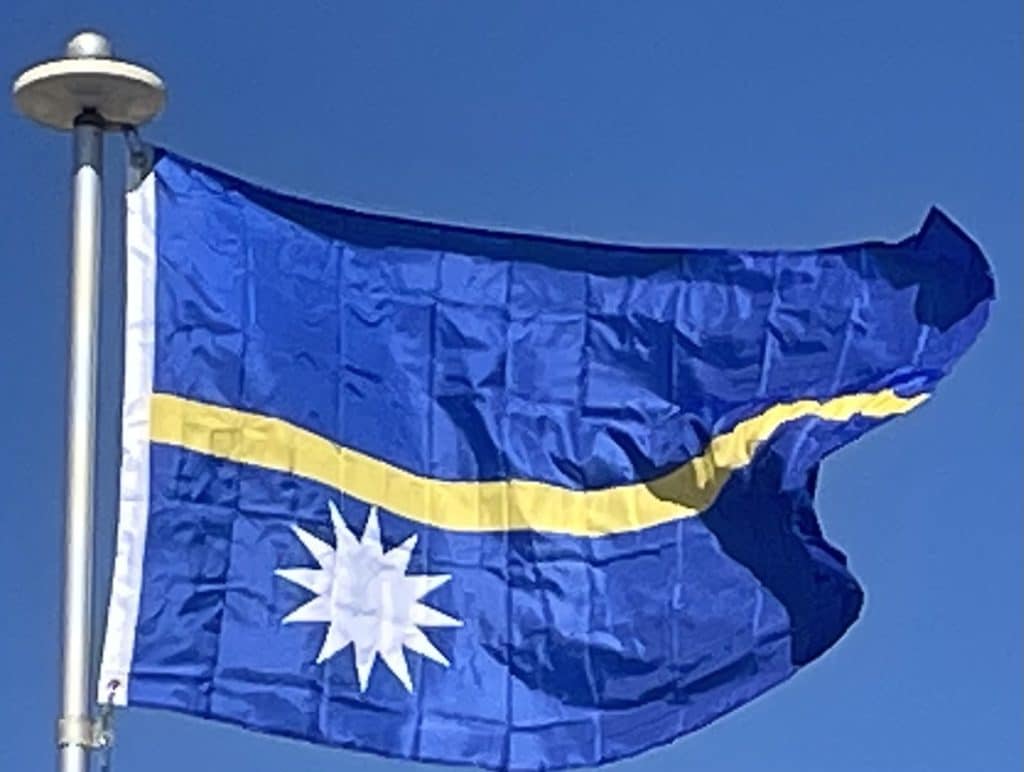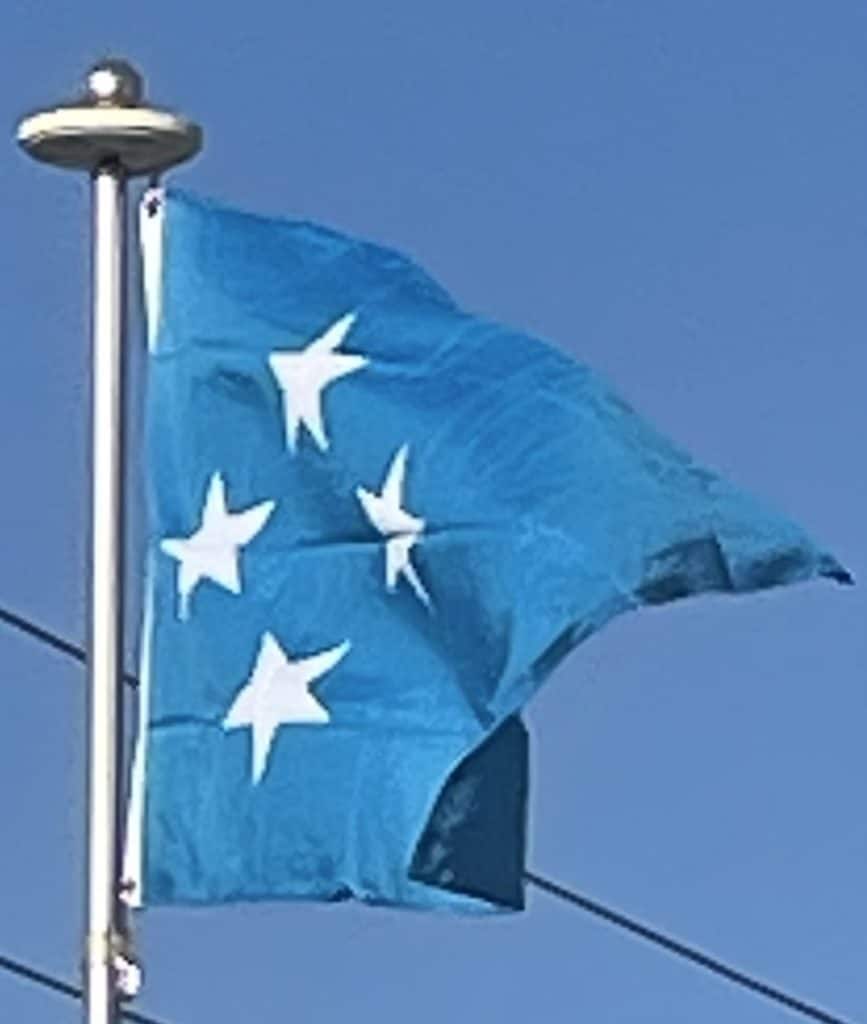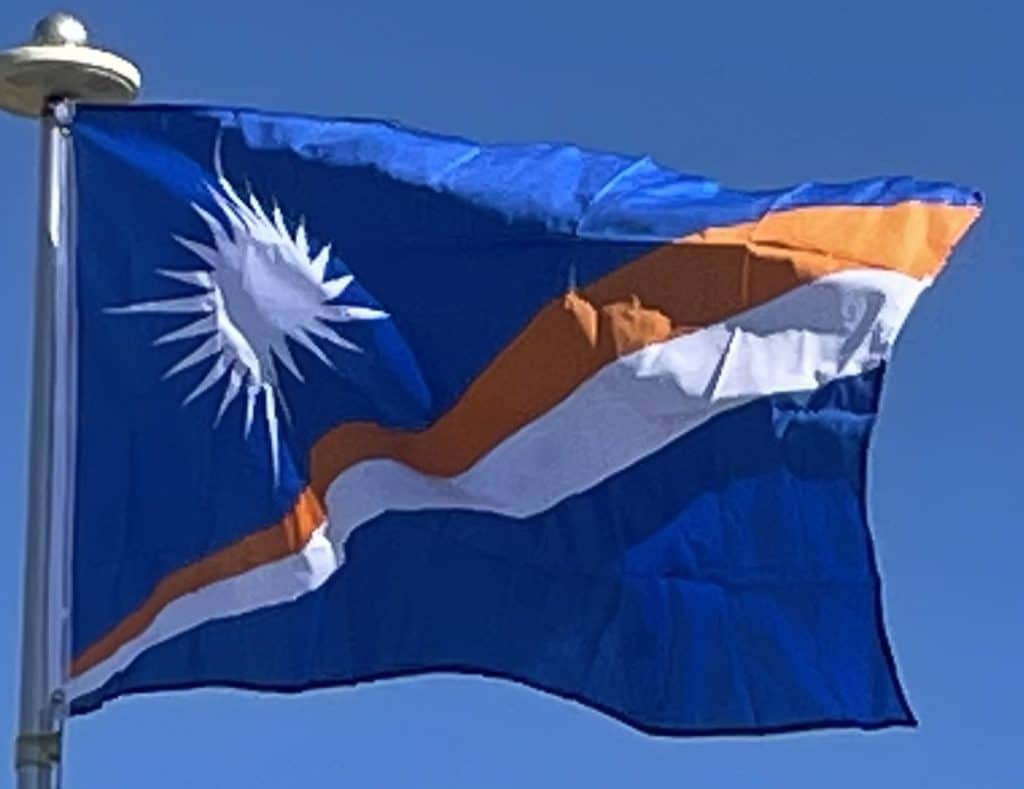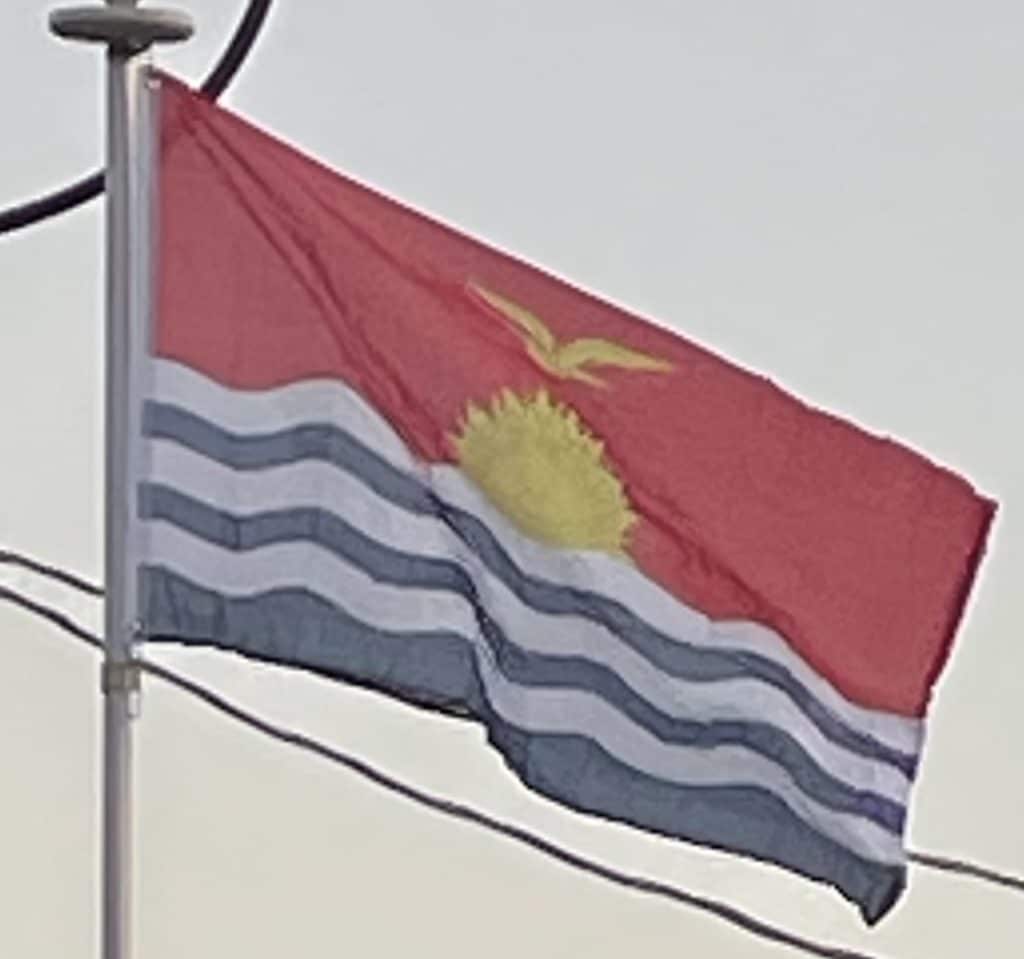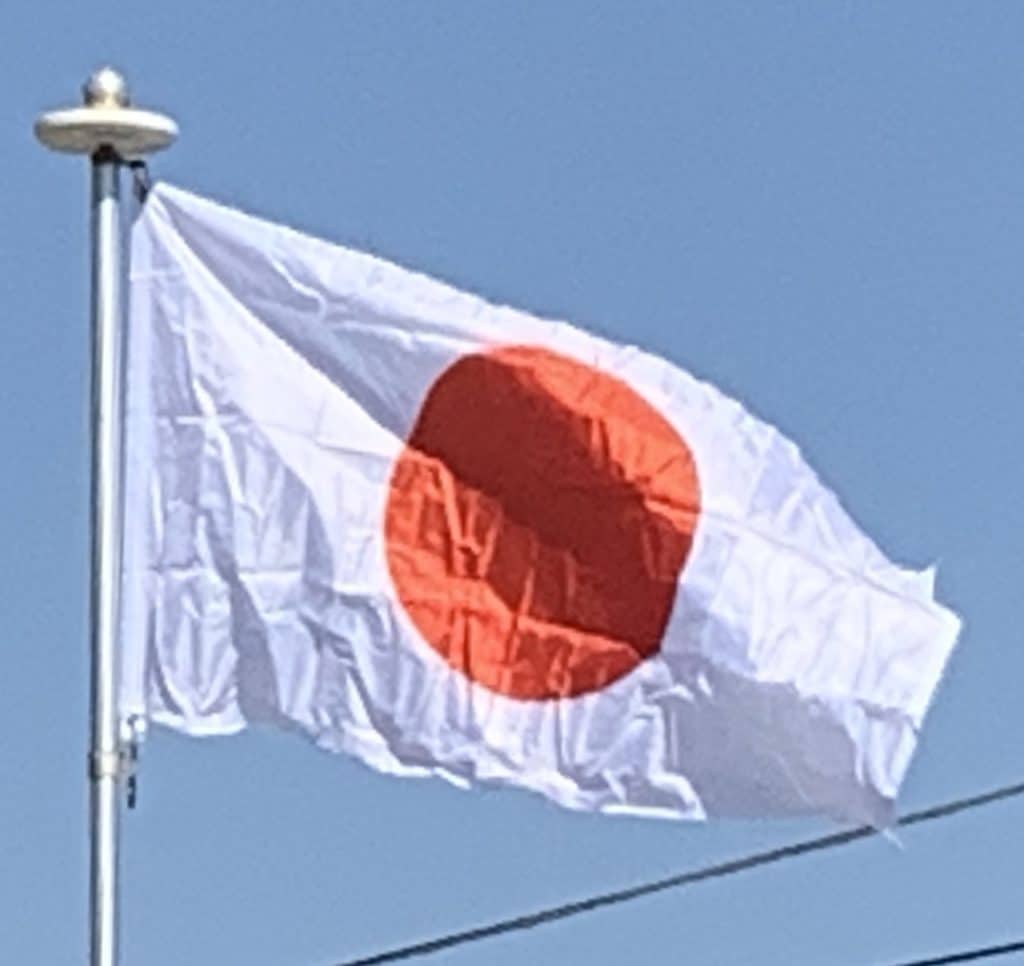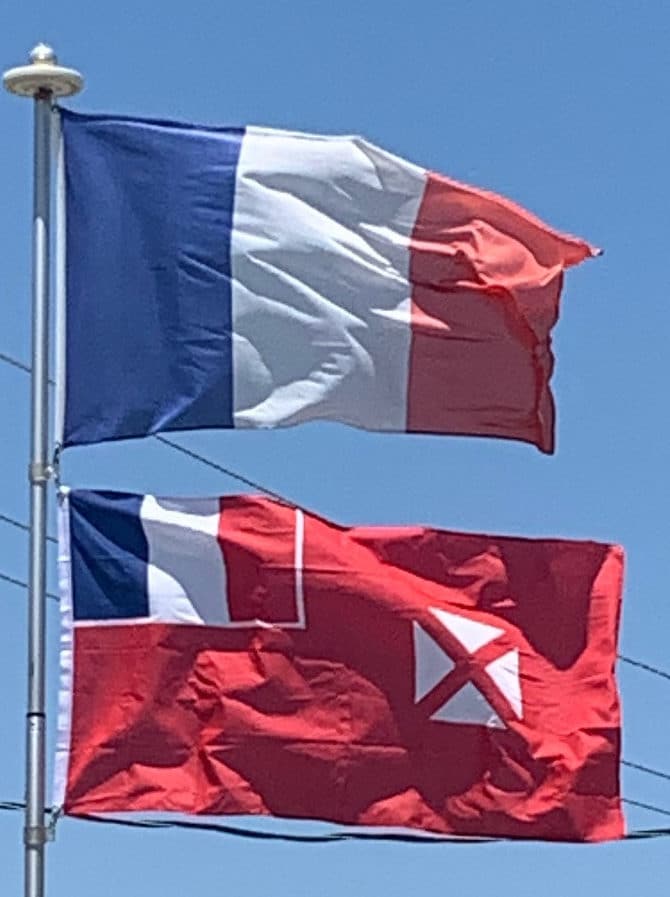Niue
The symbolism represented by the flag is described in the Act. The Union Jack symbolises the protection granted by the United Kingdom in 1900 after petitioning by the Kings and Chiefs of Niue. The yellow field symbolizes “the bright sunshine of Niue and the warm feelings of the Niuean people towards New Zealand and her people.” The association with New Zealand, which took over responsibility and administration of Niue in 1901, is also represented by the four small stars that depict the Southern Cross. Finally, the blue disc containing a larger star represents the deep blue sea surrounding the self-governing island of Niue.
